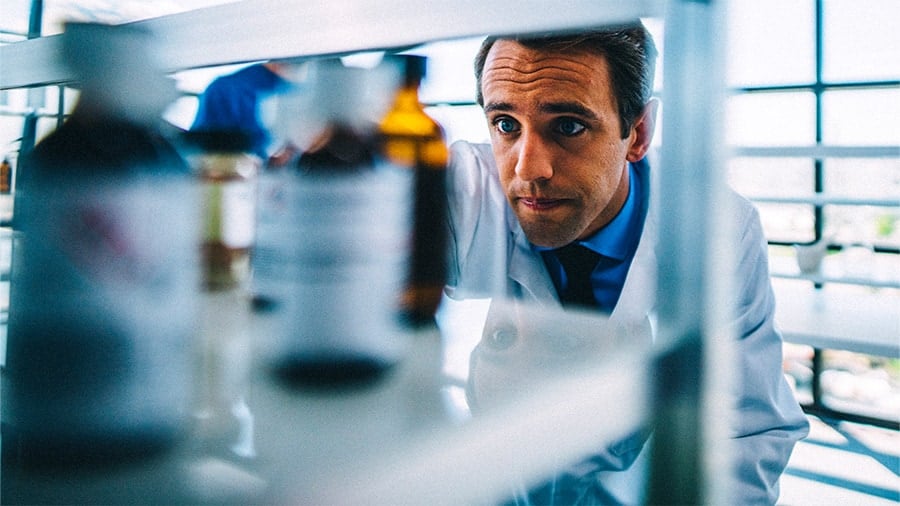
Giovanni Capozza
Expert Director


Quality Control (QC) labs provide a fundamental link in the logistic & operations chain of each pharma company. Never will a single lot of products leave a factory without being validated and released by lab testing.

Has the pandemic accelerated the need for excellence in QC lab operations? Not surprisingly, the answer is yes. Covid-19 has shaken up the rules in all professional fields, including pharma. Moreover, the demand for vaccines has pushed pharma companies to search for greater production capacity (through new investments and increased productivity) and to reduce time to market while providing flexibility.
This has created a situation that is close to being the straw that breaks the camel’s back. It has greatly exacerbated the numerous dynamics and factors which were already (and still are) challenging the quality control operating “standards” in pharma companies.
These challenging factors (both for CDMO and big or “small” pharma companies) are:
Excellent QC labs, therefore, need to do more than just increase productivity. They must also step up the level of improvement in their entire operational system. It is no longer sufficient simply to cut some non-value-added activities and deploy some lean, easy to understand tools (like 5S or Kaizen specific initiatives) to gain a few percentage points of extra productivity (typically in the range of 3 to 6 percent).
Today’s challenge is to go further. QC labs need to set up a “Real Lean System” to:
Unlike manufacturing, QC labs need to cope with a higher workload mix and volume volatility that varies greatly from day to day. Often, there is also a complex mix of routine and non-routine testing activities, as well as other non-test tasks and project work.
An additional challenge is that most QC coordinators have a preference for the “technical” side of the job. Sometimes the big picture of the entire value chain is lost as the attention is drawn toward technical optimization tasks (for instance, the focus will be on single test accuracy and individual test run efficiency) – rather than the optimization of a whole system.
We find that in various labs that the focus is on one or two of the cited key points, but this rarely (or never) happens in QC labs where a Real Lean System is in place.
A Real Lean System creates cutting-edge QC labs, by bringing together a proper performance management model with an operating model based on all lean principles.
EFESO has developed a proprietary methodology that enables these lean principles to be realized in QC Labs, through 4 steps.
While it is crucial to distinguish value-adding activities from those that are non-value adding or semi-value adding (which are needed to enable the value adding ones), it is also vital to identify those activities that will make best use of valuable time: which activities are elastic or non-elastic in terms of the lead time required and what effort will be needed to complete the task? This is crucial information for leveling out workloads.
To do this requires an understanding of the sequence of activities involved in the overall release process, as well as the relative test constraints and bottlenecks. For instance, there is no real benefit in reducing the chemical testing lead time, if a microbiology test has a greater time constraint.
It’s critical that the standard analyst effort is understood so it can be separated from waiting or equipment time, as well as the business lead time needed to release the sample.
It’s important to drop the habit of fragmenting samples into sub-samples, which are then given to specialized test analysts. Despite appearances, parallel sample analysis is not more efficient – nor is it faster. Instead, it creates more effort in coordinating and tracking sample releases, and through processes being repeated This also does not facilitate flexibility in weekly or daily schedules, it limits the cross-training of analysts, and, in the end, it absorbs at least the same or more analyst effort, with no efficiency gain.
It is preferable to create a defined test sequence (process train or rhythm wheel) – each with repeatable standard elements – then assign roles to analysts and let the samples flow along the sequence without fragmentation or interruptions. This will reduce throughput time (yes, really) and give more flexibility to the system.
A properly defined leveling mechanism (that properly queues samples, using “elastic time tasks”, and creates a mix of activities) will also release the same amount of work per analyst each day.
One last crucial point. Since a leveling strategy is mainly about increasing productivity and/or lead time, it is crucial to create planning and weekly scheduling systems that facilitate an efficient and flexible schedule – allowing for changes to be made. Managing priorities is key here. FIFO is a simple concept, but it’s often the case that the urgency of the ‘last in’ gains priority – and, in the end, everything then becomes a priority.
Once there is a robust system, with a proper balance between efficiency and flexibility, it becomes easier detect errors and waste – and this can then be addressed by specific Kaizen activities.
Design and implement structured performance control on a daily and weekly basis, based on performance review meetings and visual support tools. This will support dynamic performance realignment and long-term performance stability.
Element of REAL LEAN in QC Pharma Labs
Digital and automation technologies represent huge opportunities for QC labs (as shown below). They can bring another level of productivity and value chain integration. In some cases, these technologies are already mature – in other case these solutions are still evolving (but will soon mature).
The question to be answered here, however, is: “Is our lab ready for those technologies”? Only excellent labs – those with an understanding of how they must transform their operating model to enhance their value in the company value chain – will gain the maximum advantage from cutting-edge digital and automation technologies. If they don’t have that understanding, there will simply be a huge investment, with an ROI that falls far below expectations.
To become a cutting-edge QC laboratory the primary lever is the internal operating model. This is the only way to set a QC facility on the path that will lead beyond “simple” productivity enhancements, and become a strong, reliable and flexible link in the company value chain.
